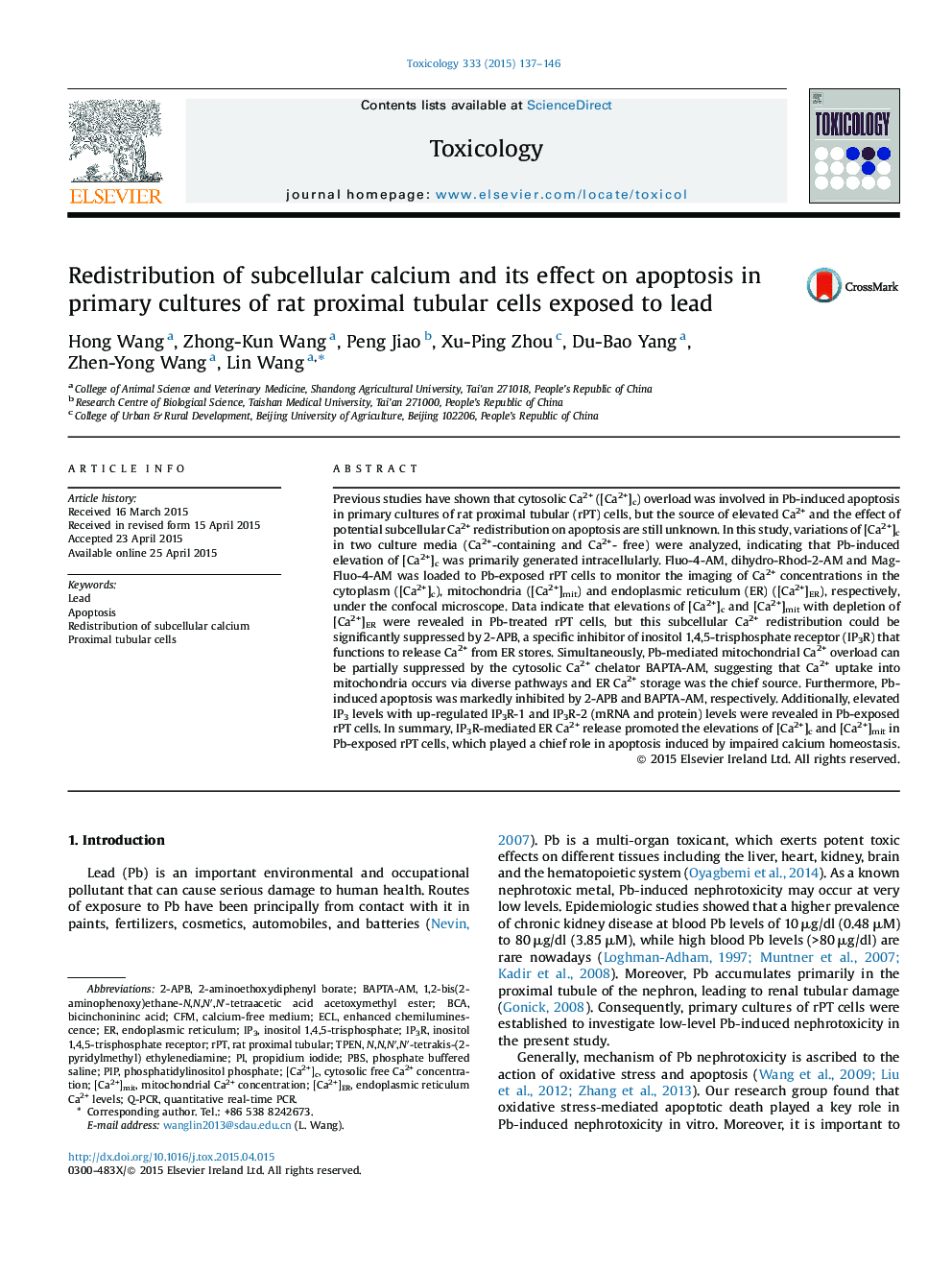| Article ID | Journal | Published Year | Pages | File Type |
|---|---|---|---|---|
| 5859038 | Toxicology | 2015 | 10 Pages |
Abstract
Previous studies have shown that cytosolic Ca2+ ([Ca2+]c) overload was involved in Pb-induced apoptosis in primary cultures of rat proximal tubular (rPT) cells, but the source of elevated Ca2+ and the effect of potential subcellular Ca2+ redistribution on apoptosis are still unknown. In this study, variations of [Ca2+]c in two culture media (Ca2+-containing and Ca2+- free) were analyzed, indicating that Pb-induced elevation of [Ca2+]c was primarily generated intracellularly. Fluo-4-AM, dihydro-Rhod-2-AM and Mag-Fluo-4-AM was loaded to Pb-exposed rPT cells to monitor the imaging of Ca2+ concentrations in the cytoplasm ([Ca2+]c), mitochondria ([Ca2+]mit) and endoplasmic reticulum (ER) ([Ca2+]ER), respectively, under the confocal microscope. Data indicate that elevations of [Ca2+]c and [Ca2+]mit with depletion of [Ca2+]ER were revealed in Pb-treated rPT cells, but this subcellular Ca2+ redistribution could be significantly suppressed by 2-APB, a specific inhibitor of inositol 1,4,5-trisphosphate receptor (IP3R) that functions to release Ca2+ from ER stores. Simultaneously, Pb-mediated mitochondrial Ca2+ overload can be partially suppressed by the cytosolic Ca2+ chelator BAPTA-AM, suggesting that Ca2+ uptake into mitochondria occurs via diverse pathways and ER Ca2+ storage was the chief source. Furthermore, Pb-induced apoptosis was markedly inhibited by 2-APB and BAPTA-AM, respectively. Additionally, elevated IP3 levels with up-regulated IP3R-1 and IP3R-2 (mRNA and protein) levels were revealed in Pb-exposed rPT cells. In summary, IP3R-mediated ER Ca2+ release promoted the elevations of [Ca2+]c and [Ca2+]mit in Pb-exposed rPT cells, which played a chief role in apoptosis induced by impaired calcium homeostasis.
Keywords
PBSMitochondrial Ca2+ concentrationbicinchonininc acid[Ca2+]ERCFM2-aminoethoxydiphenyl borate2-APBIP3RIP3ECLTPENRPTBCAinositol 1,4,5-trisphosphateq-PCR[Ca2+]cenhanced chemiluminescenceBAPTA-AMApoptosisLeadproximal tubular cellsendoplasmic reticulumcytosolic free Ca2+ concentrationPhosphate buffered salinePhosphatidylinositol phosphatequantitative real-time PCRPropidium iodidePiPInositol 1,4,5-trisphosphate receptor
Related Topics
Life Sciences
Environmental Science
Health, Toxicology and Mutagenesis
Authors
Hong Wang, Zhong-Kun Wang, Peng Jiao, Xu-Ping Zhou, Du-Bao Yang, Zhen-Yong Wang, Lin Wang,
